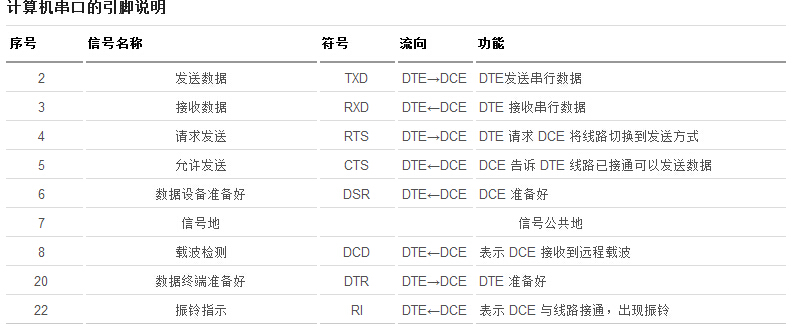LINUX程序设计最重要的当然是进程与线程。本文主要以uart程序结合键盘输入控制uart的传输。
硬件平台:树莓派B+
软件平台:raspberry
须要工具:USB转TTL(PL2303)+GCC
程序设计
首先声明,在LINUX中已经集成了PL2303的驱动,不用装驱动。
串口简单介绍
串行口是计算机一种经常使用的接口。具有连接线少。通讯简单,得到广泛的使用。
经常使用的串口是 RS-232-C 接口(又称 EIA RS-232-C)它是在 1970 年由美国电子工业协会(EIA)联合贝尔系统、 调制解调器厂家及计算机终端生产厂家共同制定的用于串行通讯的标准。它的全名是"数据终端设备(DTE)和数据通讯设备(DCE)之间串行二进制数据交换接口技术标准"该标准规定採用一个 25 个脚的 DB25 连接器。对连接器的每一个引脚的信号内容加以规定。还对各种信号的电平加以规定。传输距离在码元畸变小于 4% 的情况下。传输电缆长度应为 50 英尺。
Linux 操作系统从一開始就对串行口提供了非常好的支持,本文就 Linux 下的串行口通讯编程进行简单的介绍。假设要非常深入了解,建议看看本文所參考的 《Serial Programming Guide for POSIX Operating Systems》

串口操作
串口操作须要的头文件


#include <stdio.h> /*标准输入输出定义*/ #include <stdlib.h> /*标准函数库定义*/ #include <unistd.h> /*Unix 标准函数定义*/ #include <sys/types.h> #include <sys/stat.h> #include <fcntl.h> /*文件控制定义*/ #include <termios.h> /*PPSIX 终端控制定义*/ #include <errno.h> /*错误号定义*/
打开串口
在 Linux 下串口文件是位于 /dev 下的
串口一 为 /dev/ttyUSB0
串口二 为 /dev/ttyUSB1
打开串口是通过使用标准的文件打开函数操作:


int fd; /*以读写方式打开串口*/ fd = open( "/dev/ttyS0", O_RDWR); if (-1 == fd){ /* 不能打开串口一*/ perror(" 提示错误!"); }
设置串口
最主要的设置串口包含波特率设置,效验位和停止位设置。
串口的设置主要是设置 struct termios 结构体的各成员值。


struct termio { unsigned short c_iflag; /* 输入模式标志 */ unsigned short c_oflag; /* 输出模式标志 */ unsigned short c_cflag; /* 控制模式标志*/ unsigned short c_lflag; /* local mode flags */ unsigned char c_line; /* line discipline */ unsigned char c_cc[NCC]; /* control characters */ };
设置这个结构体非常复杂。我这里就仅仅说说常见的一些设置:
波特率设置
以下是改动波特率的代码:


struct termios Opt; tcgetattr(fd, &Opt); cfsetispeed(&Opt,B19200); /*设置为19200Bps*/ cfsetospeed(&Opt,B19200); tcsetattr(fd,TCANOW,&Opt);
设置波特率的样例函数:
/** *@brief 设置串口通信速率 *@param fd 类型 int 打开串口的文件句柄 *@param speed 类型 int 串口速度 *@return void */ int speed_arr[] = { B38400, B19200, B9600, B4800, B2400, B1200, B300, B38400, B19200, B9600, B4800, B2400, B1200, B300, }; int name_arr[] = {38400, 19200, 9600, 4800, 2400, 1200, 300, 38400, 19200, 9600, 4800, 2400, 1200, 300, }; void set_speed(int fd, int speed){ int i; int status; struct termios Opt; tcgetattr(fd, &Opt); for ( i= 0; i < sizeof(speed_arr) / sizeof(int); i++) { if (speed == name_arr[i]) { tcflush(fd, TCIOFLUSH); cfsetispeed(&Opt, speed_arr[i]); cfsetospeed(&Opt, speed_arr[i]); status = tcsetattr(fd1, TCSANOW, &Opt); if (status != 0) { perror("tcsetattr fd1"); return; } tcflush(fd,TCIOFLUSH); } } }
效验位和停止位的设置:
| 无效验 | 8位 | Option.c_cflag &= ~PARENB; Option.c_cflag &= ~CSTOPB; Option.c_cflag &= ~CSIZE; Option.c_cflag |= ~CS8; |
|---|---|---|
| 奇效验(Odd) | 7位 | Option.c_cflag |= ~PARENB; Option.c_cflag &= ~PARODD; Option.c_cflag &= ~CSTOPB; Option.c_cflag &= ~CSIZE; Option.c_cflag |= ~CS7; |
| 偶效验(Even) | 7位 | Option.c_cflag &= ~PARENB; Option.c_cflag |= ~PARODD; Option.c_cflag &= ~CSTOPB; Option.c_cflag &= ~CSIZE; Option.c_cflag |= ~CS7; |
| Space效验 | 7位 | Option.c_cflag &= ~PARENB; Option.c_cflag &= ~CSTOPB; Option.c_cflag &= &~CSIZE; Option.c_cflag |= CS8; |
设置效验的函数:


/** *@brief 设置串口数据位,停止位和效验位 *@param fd 类型 int 打开的串口文件句柄 *@param databits 类型 int 数据位 取值 为 7 或者8 *@param stopbits 类型 int 停止位 取值为 1 或者2 *@param parity 类型 int 效验类型 取值为N,E,O,,S */ int set_Parity(int fd,int databits,int stopbits,int parity) { struct termios options; if ( tcgetattr( fd,&options) != 0) { perror("SetupSerial 1"); return(FALSE); } options.c_cflag &= ~CSIZE; switch (databits) /*设置数据位数*/ { case 7: options.c_cflag |= CS7; break; case 8: options.c_cflag |= CS8; break; default: fprintf(stderr,"Unsupported data size "); return (FALSE); } switch (parity) { case 'n': case 'N': options.c_cflag &= ~PARENB; /* Clear parity enable */ options.c_iflag &= ~INPCK; /* Enable parity checking */ break; case 'o': case 'O': options.c_cflag |= (PARODD | PARENB); /* 设置为奇效验*/ options.c_iflag |= INPCK; /* Disnable parity checking */ break; case 'e': case 'E': options.c_cflag |= PARENB; /* Enable parity */ options.c_cflag &= ~PARODD; /* 转换为偶效验*/ options.c_iflag |= INPCK; /* Disnable parity checking */ break; case 'S': case 's': /*as no parity*/ options.c_cflag &= ~PARENB; options.c_cflag &= ~CSTOPB;break; default: fprintf(stderr,"Unsupported parity "); return (FALSE); } /* 设置停止位*/ switch (stopbits) { case 1: options.c_cflag &= ~CSTOPB; break; case 2: options.c_cflag |= CSTOPB; break; default: fprintf(stderr,"Unsupported stop bits "); return (FALSE); } /* Set input parity option */ if (parity != 'n') options.c_iflag |= INPCK; tcflush(fd,TCIFLUSH); options.c_cc[VTIME] = 150; /* 设置超时15 seconds*/ options.c_cc[VMIN] = 0; /* Update the options and do it NOW */ if (tcsetattr(fd,TCSANOW,&options) != 0) { perror("SetupSerial 3"); return (FALSE); } return (TRUE); }
须要注意的是:
假设不是开发终端之类的,仅仅是串口数据传输,而不须要串口来处理。那么使用原始模式(Raw Mode)方式来通讯,设置方式例如以下:
options.c_lflag &= ~(ICANON | ECHO | ECHOE | ISIG); /*Input*/ options.c_oflag &= ~OPOST; /*Output*/
读写串口
设置好串口之后。读写串口就非常easy了。把串口当作文件读写就是。
-
发送数据
char buffer[1024];int Length;int nByte;nByte = write(fd, buffer ,Length)
-
读取串口数据
使用文件操作read函数读取,假设设置为原始模式(Raw Mode)数据传输。那么read函数返回的字符数是实际串口收到的字符数。
能够使用操作文件的函数来实现异步读取,如fcntl,或者select等来操作。
char buff[1024];int Len;int readByte = read(fd,buff,Len);
int fd,fd1; int flag11; int nread; char buff[512]={}; char *dev ="/dev/ttyUSB0"; /*打开串口0*/ fd = OpenDev(dev); //open uart dev if (fd>0) { set_speed(fd,57600); //set uart baud speed printf("success Open Serial Port "); } else { printf("Can't Open Serial Port! "); exit(0); } if (set_Parity(fd,8,1,'N')== FALSE)//set uart odd/even fomat { printf("Set Parity Error "); exit(1); } printf("Set Parity success "); printf("open keyboard success "); /*向串口中写数据*/ write(fd, "1,SVS,2,200 ", 16); write(fd, "1,SVS,1,200 ", 16); printf ("**********Now into while(1)********** "); while(1) { /*循环读取其它设备传入的数据*/ while((nread = read(fd,buff,512))>0) { //write(fd, "I am writo back", 16); printf(" Len %d ",nread); buff[nread+1]='�'; printf(" %s",buff); } }
关闭串口
关闭串口就是关闭文件。
close(fd);
scanf线程
因为scanf是堵塞程序,也就是在程序中出现了scanf的地方那么就要等待用户的输入。而不能运行其它的函数。假设我们增加线程处理,那么能够非常好的解决问题。
线程处理函数
/*线程运行函数*/ void *create(void *arg) { unsigned char *a=0; char pet[20];//字符串 while(1) { printf("please input the pet "); scanf("%s",pet); printf("thread : pet = %s ",pet); } return (void *)0; }
main函数
int main( int argc, char** argv ) { pthread_t tidp; int error; struct menber b={0}; printf("I am start "); unsigned char a; /*创建线程并执行线程执行函数*/ error = pthread_create(&tidp, NULL, create, (void *)&b); if( error ) { printf("phread is not created... "); return -1; } while(1) { /*堵塞等待线程退出*/ //pthread_join(tidp, NULL); printf("main function "); //住函数执行,不影响线程 sleep(1); } return 0; }
參考
LINUX下串口编程入门:http://www.ibm.com/developerworks/cn/linux/l-serials/index.html
APUE第11章
